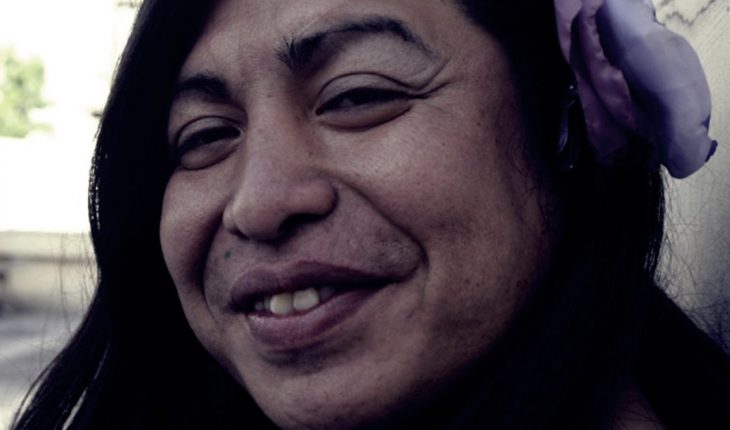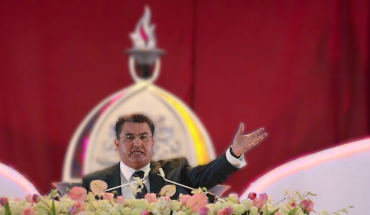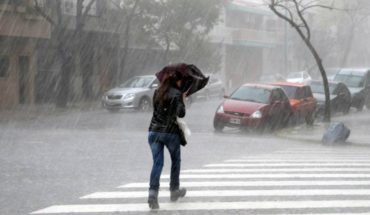Diana Sacayán was not just any trava. He was a reference, activist and representative of one of the most infringing movements in human history. His voice, the voice of transgender people and transvestites who go through the cruellest atrocities imposed by patriarchy. And when we say “atrocities” that’s specifically what we mean. Maniatadas, coimeadas, violent, sexually abused by security forces, without the right to decent housing, to an education without violence or discrimination, taken from their homes and without access to formal work simply because they are who they are. And that Diana had very clearly. The activist was killed by Gabriel David Marino at the age of 38. On June 18 of this year, his killer was sentenced to life in prison and for the first time in history the figure of “hate crime” and “transvestite” was marked in such a sentence. It is that of course, again, Diana was not anyone, she was the defender of the rights she did not have, a tireless militant for trava identity, a political reader, influential and with great power. The fault was historic and the likes in the networks soon arrived. What didn’t take long for him to arrive either was the battalion of sexist justice. Months after that fact, judges Patricia Llerena, Gustavo Bruzzone and Jorge Luis Rimondi signed the resolution that overturned the aggravating “travesticide” of the sentence handed down by the Oral Criminal Court (TOC) 4, when they considered Marino to have acted out of “hatred of gender identity” of the trans leader. But why? What made this important step co-armed? To understand a little more, Filo.News spoke to Luli Sanchez, lawyer on the case and Say Sacayán, activist and brother of the victim. For justice, Sacayán’s crime was not a cross-reference because Marino “loved her”, “gave her kisses on the mouth”, which speaks of a linear and very unrithetic reading of events. Indeed, another “evidence” he offered is based on an investigation by the Inter-American Commission on Human Rights (IACHR) in which they refer to how such crimes are discussed and how brutal they are carried out. To the Marine not having applied enough torture on Diana’s body, for justice the hate crime is not justified. Still, what catches the eye of this point is that, when Diana’s opinion as a cross-icide turned the world around, the IACHR has highlighted the news as one of the most important and historic of our century. “At the trial, part of the evidence we provided, in addition to Say Sacayan’s testimony that explained why cross-trial is in his phenomenology and dynamics of extreme violence linked to genocide, were investigations into hate crimes, transvestites and transphemicides conducted by Diana Sacayan and Lohana Berkins for the magazine El teje. These investigations constitute a criminal body and a cultural acquis,” she explains. The IACHR bases its report on these researches at the Latin American level, Diana was then the benchmark of the International Lesbian, Gay, Bisexual, Trans and Intersex Association for Latin America and the Caribbean (ILGALAC), part of whom led the IACHR to this process of recognition of rights. That’s why the reaction is pain, because there is a trans trans transvestite knowledge that had been recognized in the undergraduate sentence and is dismissed without much regard by marriage,” adds the lawyer.” I’m not going to go to jail for killing a bitch.”
This phrase was said by Marino in his statements and is one of the clearest evidence that the defendant denied Diana’s transvestite identity. And denying it is part of the structural violence that this group has lived through forever. Understanding the importance of the figure of “travesticide” within Justice is key. That there is a ruling that Diana was murdered for being who she was, means that the state, through the judiciary, accepts that being transvestite or trans in this country is a risk factor. Trans people live between 35 and 40 years old. This fact and this figure is repeated over and over again as it speaks of a reality that society seems to deny. But it is not from anywhere other than from the state itself that these violences are triggered that they end up alibiing almost half the life of an entire collective. “All of this is part of the same inertia that has been sustaining the impunity of cross-reference and transfemicides. The excuse used to be that he wasn’t criminalized. He’s been criminalized for eight years now, but the excuse is that it’s not possible to prove it. That’s why when they talk to me about changing the law once again, I say yes, it may be, but that doesn’t save the problem. Thes laws are there, judges are the ones who don’t want to enforce them. Cross-dressing is a popular figure and the sentence that recognized it is a popular sentence,” explains the lawyer.” I don’t know what I have to think. They seem to say that he ‘inadvertently’ killed her, that he inadvertently gagged her, that the blow to the did it unintentionally, that my sister’s face ended up in Marino’s shoe inadvertently. As if he was actually to blame for getting hurt like that outside Diana because he tried to defend himself from the attack. It’s very horrible and painful,” Say explains. While the news of the figure of “travesticide” turned the world around the world for all it means, this step backwards did not yet make enough noise. For the lawyer, the decision to cross out Diana’s cross-dressing has a complex implication within justice and the idea of returning an acquired right into a reality, a lot of resistance.
It is inadmissible that there are judicial practices such as those of Judges Rizzi and Anzoátegui, which continue to overwhelm women’s rights and ignore CSJN rulings. — Eli Gomez Alcorta (@EliGAlcorta)
October 6, 2020
“This sentence is, once again, a inflection between what has been achieved and what is missing. But above all, it is the explanation of a legal political dispute in the judicial field, with regard to transvestite writing in particular. There is a tolerant approval of trans identities to cisgender identities. There is a political decision by this government to bring that fiction into practice, with high-ranking transvestite officials and trans labour inclusion in state-owned enterprises and trans transvestite quota in the national state. But there are still steps to take for the recognition of identity multiplicity,” Sanchez says.” The perspective of diversity within Justice has a lot of significance and so does this judgment. Diana is core and that’s where they attack. That’s why we’re convinced that this reversal is a political response. ‘Well, well, we’re going to attack the core where it all started.’ It is a brake for this conquest of acquired rights. It’s a direct attack,” says Sacayán’s brother, who was Diana?
Say Sacayán, Diana’s brother.
The crime, committed on October 11, 2015, marked a before and after in the struggle of transvestite and trans activism. Sacayán wasn’t one more and didn’t make up her mind as a woman. She claimed transvestite identity as a political identity and the need for militancy and visibility to change the situation of this group. The truth is that the figure of “the transvestite” in mainstream culture and in the media, until not long ago, was ridiculed and the stigma of “man disguised as a woman” strikes over and over again his self-perduced identities. They’re not a joke, they’re not acting or a whim. It is important to understand that for the law transvestite and trans people exist, that their name exists, that their rights exist and pass over this is, in addition to violent, unconstitutional. Amancay Diana Sacayán was born in Tucumán on December 31, 1975 and was a descendant of the Diaguita people. When she was a little girl, with her family she moved to the town of Gregorio de Laferrere, a party of La Matanza in the Province of Buenos Aires. Diana assumed her transvestite identity at the age of seventeen, which she lived proudly throughout her life. Also throughout his life he suffered police persecution like most of his colleagues for the contraventions that criminalized homosexuality and “travestism.” She was imprisoned several times but always came out and made those events, an action of militancy. She was part of the Communist Party and became a candidate for School Counsellor. I pushed for several bills that became a reality such as the repeal of stigmatizing articles that persecuted people in prostitution and people who “dressed in clothes that did not correspond to their sex.” Diana created the Anti-Discrimination Liberation Movement (M.A.L), a non-governmental organization to combat all forms of discrimination, with a special emphasis on which she engages lesbian, gay, bisexual, transvestite, trans and Intersex (LGBTI) people promoting the empowerment of transvestite and trans people to consolidate the exercise of their rights. She promoted the project that later became the National Gender Identity Act and was the first to receive the ID with her self-perverted identity. He participated in the construction of the books La gesta del nombre propio and Cumbia, copeteo y lágrimas, national reports on the situation of transvestites, transsexuals and transgenders. She participated in the first newspaper written by transvestites throughout Latin America and was also editor of the supplement Soy de Page/12.It should be noted that this long road reco-arrival, he did it with the headwind. In a society that still resists anything other than male or female, heteronomism and machismo, Diana’s political imronta makes it historic to the movement and to the whole world. Backing up never
For all this, the trial for the cross-trial of Diana Sacayán that began on March 12, 2018 before the Oral Court in criminal and correctional No. 4 of the Autonomous City of Buenos Aires, is key. In principle, Gabriel David Marino, who was convicted of “triple aggravated murder for being executed through gender-based violence, hatred of gender identity and alevosía”, swayed it between Saturday 10 and Sunday 11, 2015. The victim had his hands and feet tied, had been gaged and everything indicated that it was a crime “committed with a high degree of violence,” the record says. Because of its meaning, the importance and advancement of the rights of transvestites is that the LGBTQI* movement and many non-governmental organizations such as Amnesty International hope that events will change and that this setback of patriarchal justice will be a stop. “It seems to me that they want, with this, to give us a message. Yes. But they’re going to have to back off. And I’m willing to do anything. While he gets very tired and there are several times I get discouraged, I’m not going to stop until justice is done for my sister. We’re going to implement all the strategies and fights that need to be implemented,” Say exacerbates, to appeal to this ruling, Sacayán’s defense must turn to the Supreme Court and demand that it review this case that sets a historical precedent across our country and across the region. “There are several questions that are coming to court based on the institutions’ refusal to apply the gender identity law,” she says, “As Say said, these are answers because trans and transvestite companions, not binaries, are occupying the places they have to occupy. The rule of law is no longer a cisgender privilege.”





